Author: Grace Pan
Date: 26 May 2025
Once upon a time—long before Instagram filters and fashion week street style—there was a man who saw the world through a kaleidoscope of colours. His name was Emilio Pucci, and he changed fashion forever by proving that bold could be beautiful, and that prints weren’t just patterns, they were a way of life.

Let’s rewind to the 1940s. Emilio Pucci wasn’t your typical designer. In fact, fashion wasn’t even his original path. Born into one of Florence’s oldest noble families in 1914, he was a count, a scholar, and an athlete. He studied in America and Switzerland, earned a degree in political science, and competed as an Olympic skier. But fate had other plans.
The Accidental Debut
Pucci’s fashion story began quite by accident. While skiing in Switzerland, he designed a sleek, aerodynamic outfit for a friend. That look caught the eye of a Harper’s Bazaar editor, and just like that, the fashion world came calling. In a post-war era where style was still rigid and formal, Emilio Pucci offered something totally different: elegance that moved.
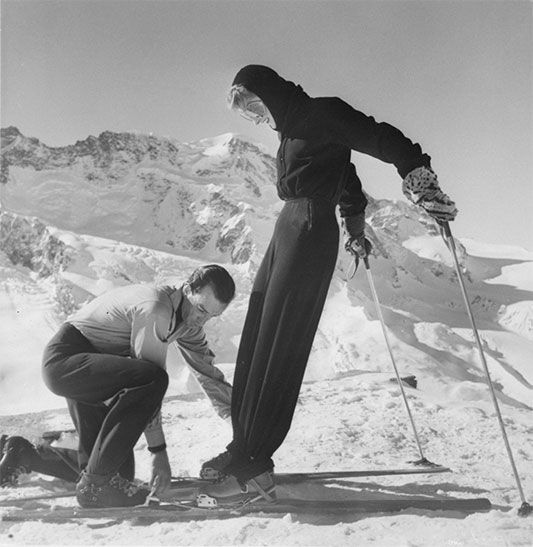
He leaned into it. By the early 1950s, he’d opened a boutique on the island of Capri, which would become ground zero for his fashion revolution. Think breezy dresses, silk blouses, and the now-famous Capri pants—all created with vacation vibes in mind. Pucci wasn’t just designing clothes; he was designing a lifestyle.
Patterns with Personality
What really set Emilio Pucci apart, though, were his prints. They were wild. Swirling. Hypnotic. It was like someone bottled the Mediterranean sunset and poured it onto fabric. Inspired by everything from Sicilian mosaics to marine life and the rooftops of Florence, Pucci’s designs were full of motion and colour—hot pinks, sea blues, citrus oranges.
He didn’t just dabble in prints—he owned them. Each one was hand-drawn and signed, like a painter signing their canvas. His prints became so iconic that even without a logo, you knew it was Pucci.
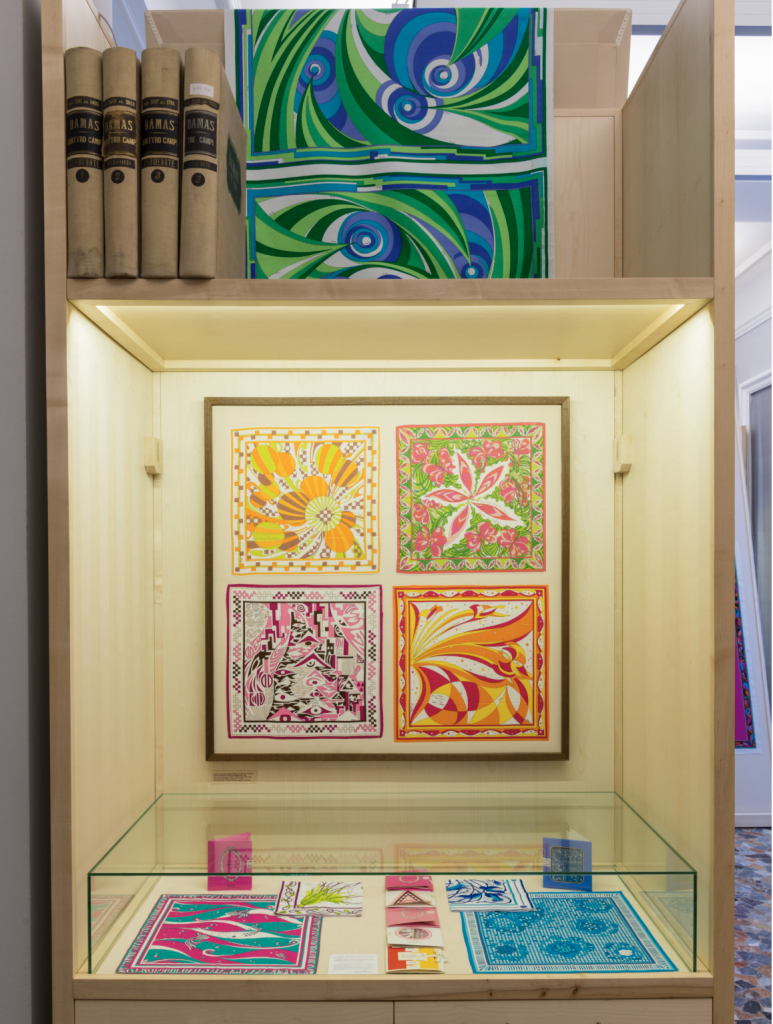
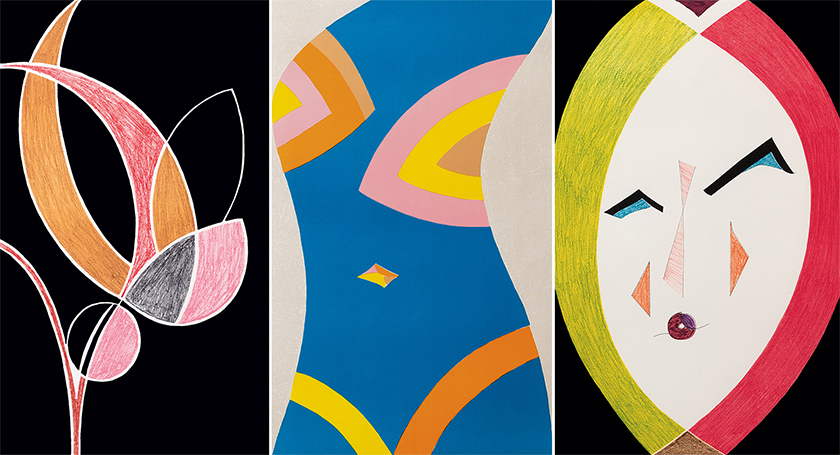
So, among all the pieces Emilio Pucci has done, may I show you one of the most famous? Here it is, the Vivara print. It was inspired by a tiny Italian island and became the visual identity for both fashion pieces and even Pucci fragrances later on.
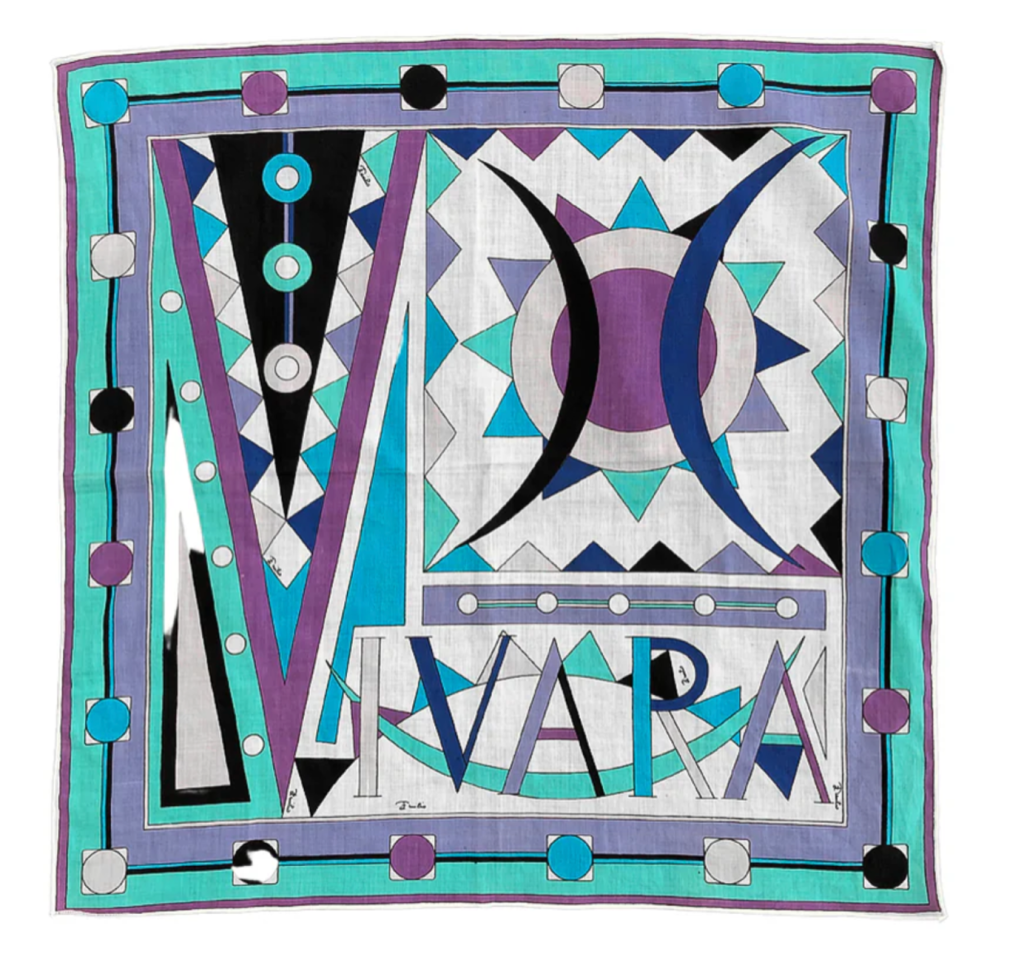
Jet-Set Approved
It wasn’t long before the most glamorous women in the world started wearing Pucci. Marilyn Monroe was a fan. So was Jacqueline Kennedy, Sophia Loren, and even Audrey Hepburn. His clothes were everywhere—from the beaches of Capri to the covers of glossy magazines. The jet-set crowd couldn’t get enough.
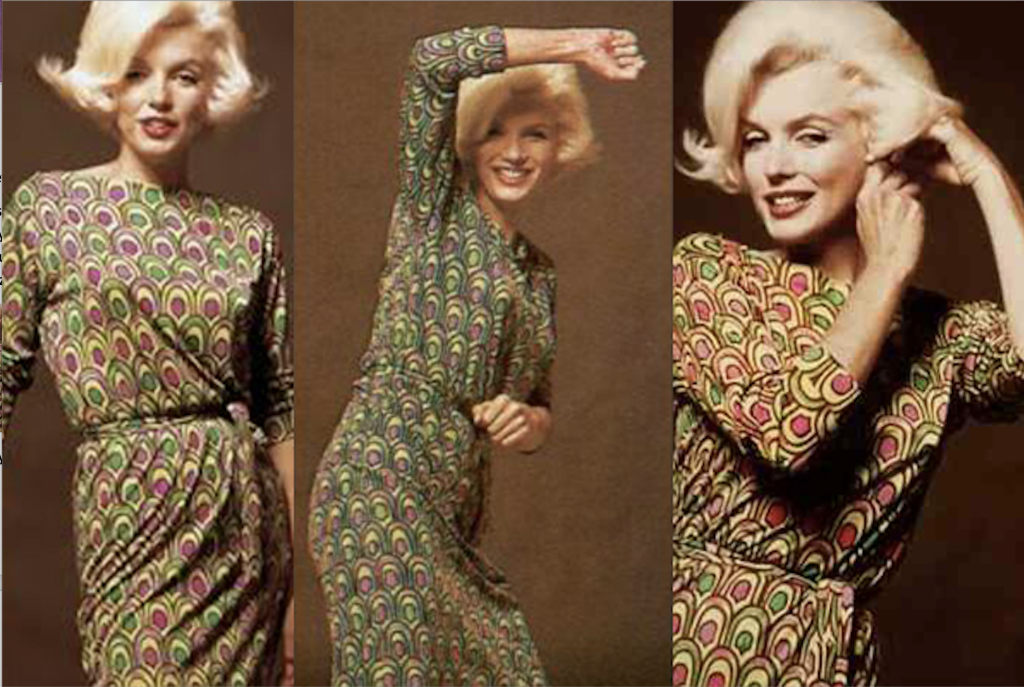
Emilio Pucci also made history by designing airline uniforms for Braniff International in the 1960s. Picture flight attendants in bubble helmets and neon minis—a far cry from today’s standard airport attire. He even had his name on everything from perfume to luggage long before designer branding was a thing.
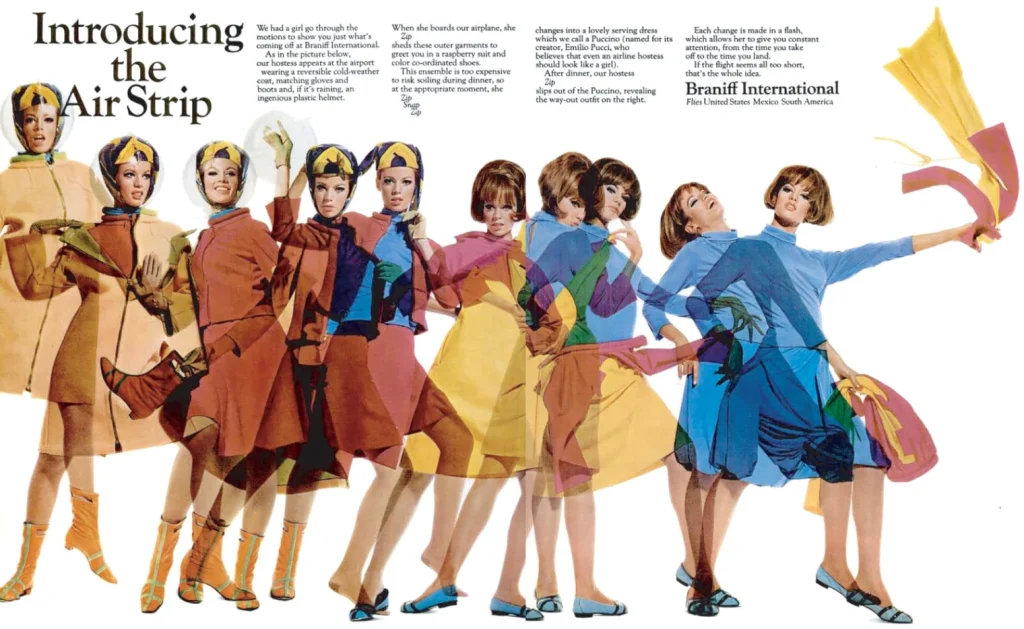
Life After Emilio
Emilio Pucci passed away in 1992, but his spirit never really left fashion. The brand was acquired by LVMH in 2000, and with the help of several creative directors (including Christian Lacroix and Matthew Williamson), Pucci’s legacy has been carefully reimagined for new generations.
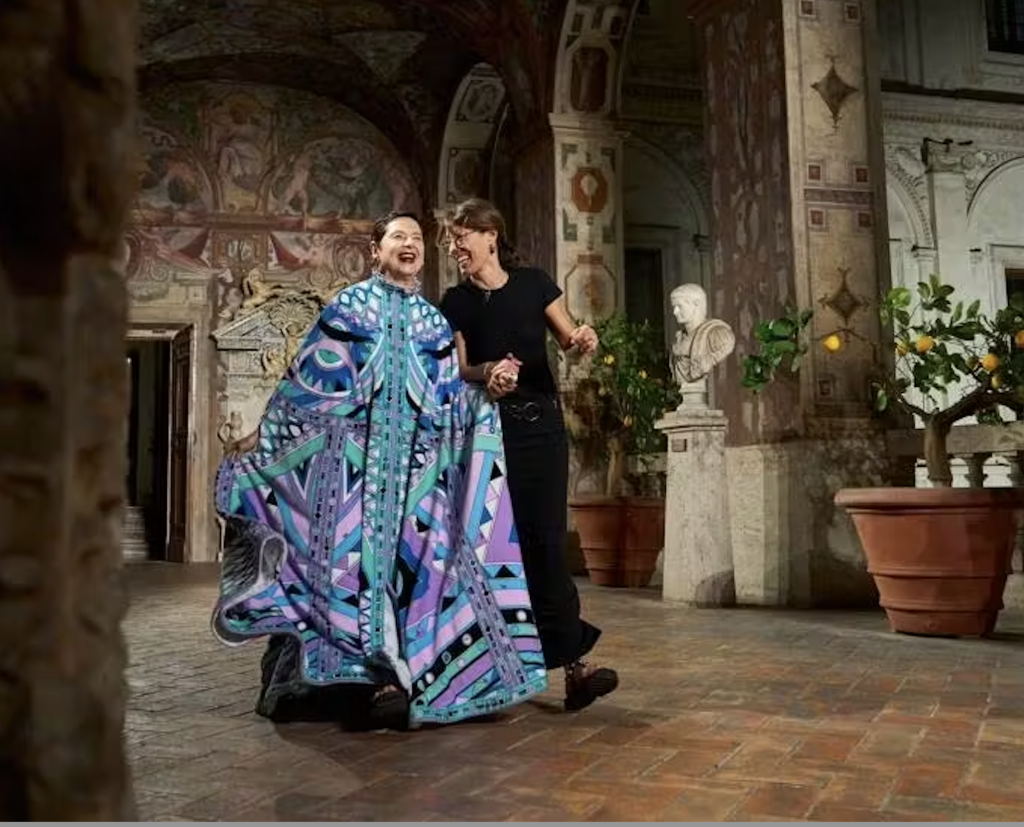
Today, under the creative direction of Camille Miceli, Pucci has fully embraced its resort-wear identity—releasing collections full of silk kaftans, swimwear, scarves, and flowy silhouettes that feel both nostalgic and fresh.
And let’s talk about those scarves. Vintage Pucci scarves have become hot-ticket items on platforms like Depop and The RealReal. Fashion influencers are wrapping them around ponytails, twisting them into crop tops, or tying them onto handbags. It’s effortless glam with a hit of throwback cool.
Why Pucci Still Matters
In a world that often swings toward neutrals and minimalism, Pucci’s prints remind us that fashion can still be fun. His designs celebrate joy, movement, and individuality. They’re unapologetically bold—something that feels especially refreshing today.
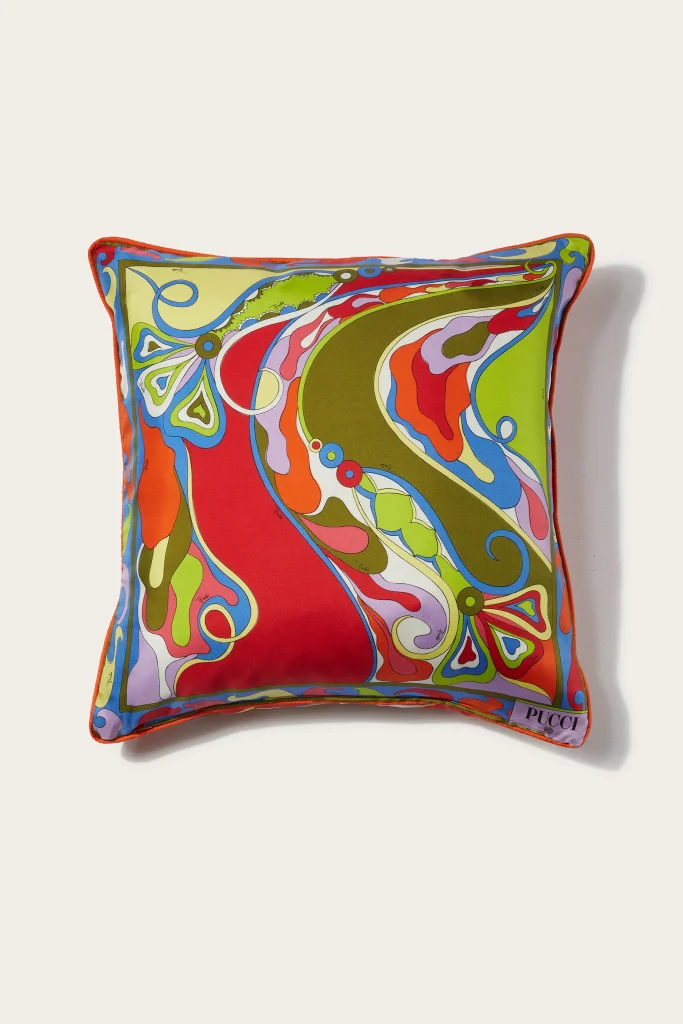
And let’s not forget: Emilio
Pucci didn’t just follow trends; he made them. He anticipated the rise of leisurewear, resort fashion, and even branding as identity—all before it was mainstream.
The Takeaway
So, what can we learn from Emilio Pucci? That fashion doesn’t always need to be serious to be powerful. That prints can tell stories. That a scarf is never just a scarf. And that colour, the real, bold, fearless colour, never goes out of style.
Whether you’re vintage shopping for that perfect Pucci piece or just getting inspired to add more pattern into your wardrobe, remember: you’re not just wearing a look. You’re wearing a little piece of fashion history.
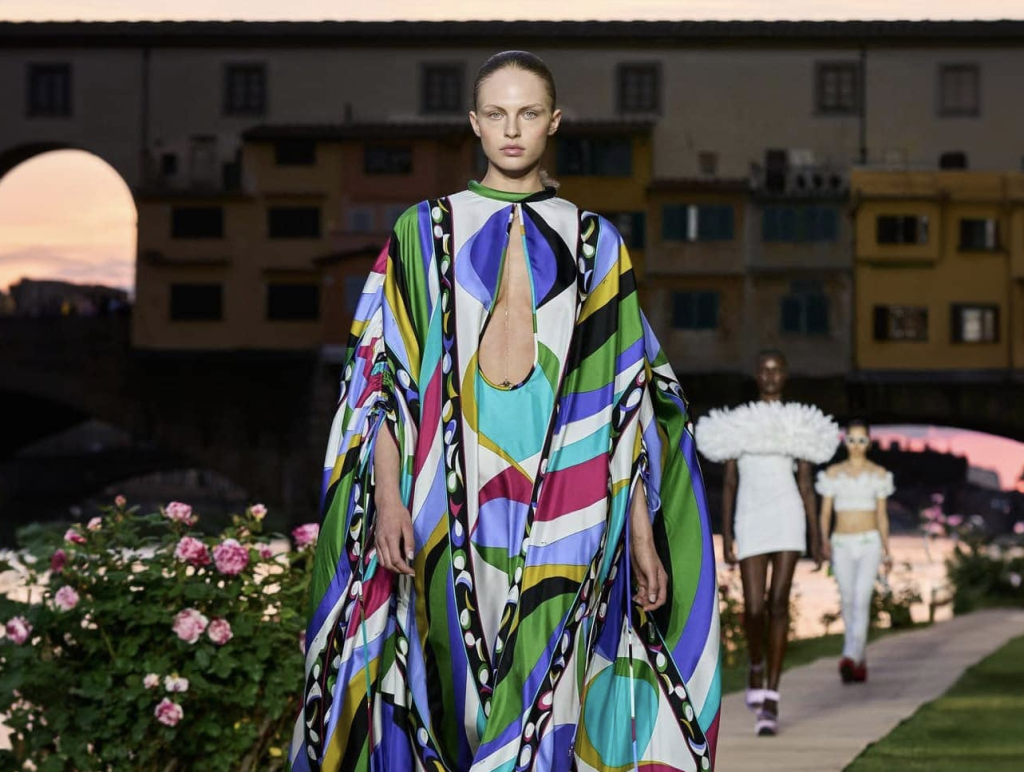
Our Big Fame in Prints celebrates the legacy of the world’s most famous textile and print pioneers. This series delves into their business story, timeless designs, and enduring influence on global fashion, interiors, and cultural aesthetics.]
Other articles under this series:
Timeless Nature: 10 Famous William Morris Patterns and Their Enduring Legacy
William Morris: The Visionary Behind History’s Most Beautiful Designs
From War to Wow: How Missoni and Marimekko Changed Fashion with Colour and Creativity
The Story of Marimekko: Global Success in Bold Visions
Art You can Wear – Vera Neumann, A Timeless Visionary in Colour and Pattern
Vera Neumann: The Woman Who Made Scarves a Canvas of Art
Missoni: The Legacy of Italian Knitwear and its Iconic Patterns
Timeless Knitwear with Missoni Designs and its Brand Inference
Saddles to Silk: The Evolution of Hermès into a Global Luxury Icon
The Art of Hermès Scarves: A Brief Analysis That Defines Luxury
Liberty – The Fascinating History and Its Iconic Fabric Prints
Liberty Patterns – The Artistry and Versatility of its Timeless Elegance
If you would like to learn more about fabric, craftsmanship, manufacturing process, or need further cooperation, please email us via the email address vip@docsunhomeandliving.com, or click the image below to visit our official website. Also you can visit Docsun Silk for Daily outfit guidance.
2024.11-300x300.png)
